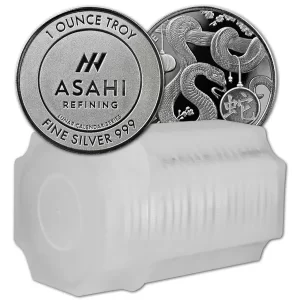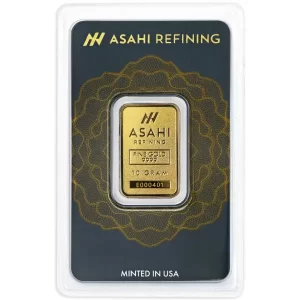The history of precious metals is connected with the development of money and human civilization. Without knowing their history, it’s hard to appraise precious metals today. Gold is a commodity, like oil, timber, soybeans, and coffee – consumables. Gold persists. It may be recycled even when used in jewellery.
Silver prices in Canada and across the globe are driven by consumer and industrial demand, and prices are rising due to increasing solar panel output. Gold’s history as a store of wealth gives it a place in financial portfolios. We’ll look at the millennia-old history of bullion, gold bullion price history, and 20th- and 21st-century gold and silver price history. If you want to purchase metal in Canada, it helps to know how historical circumstances impacted pricing and how gold and fiat money developed.
Early decoration and worship
Gold has always captivated humans. Early archaeological findings date back to 4000 BC in Eastern Europe, when it was used to produce jewellery and religious idols. Initially, gold was discovered in streams and rivers. Humans have valued this metal for its colour, durability, and rarity since ancient times.
Ancient currency invention
There has never been a time when there wasn’t a demand for substances that might serve as a medium of value. Instead of striving to be self-sufficient, humans have found more success by cooperating with one another. Because of the restrictions imposed by the economics of barter, early people gradually gravitated toward using materials that were both uncommon in nature and amenable to being manipulated as a medium of value. Materials like as cowry shells, mother-of-pearl, amber, copper, beads, and lead were all used as forms of payment in various parts of the globe. These materials made it simple to engage in commerce, settle debts, and bestow presents on others.
The ancient Egyptians did not produce the shekel, a currency made from a natural alloy of gold and silver called electrum, until around 1500 BC. The shekel was the first known coin to be manufactured from electrum. It became the universally accepted means of exchange for commerce around the globe very rapidly.
Around 650 BC to 600 BC, the Lydian kingdom, which is now located in Turkey, produced the world’s first currency made entirely of gold. Because of its mobility and durability, coinage became a key component of the developing global commerce network that connected Europe, Africa, and Asia. The ability of political authorities to exert control over the creation of coins and, by extension, their circulation made coinage a popular form of currency.
The Middle Ages saw the introduction of silver coins.
Western Europe’s capacity to sustain sophisticated infrastructure declined after the fall of the Roman Empire (such as gold mines, mints, or the trade routes that could circulate the metals). In the early Middle Ages, copper-based coins were employed for small-scale transactions in the west.
Gold was scarce. Local rulers or the Catholic Church hoarded it. By the seventh century, silver was Europe’s main currency. The silver rush confirmed the metal’s role in global economy because silver ore was abundant in Europe, notably Great Britain and Germany.
Paper money and the gold standard are two hallmarks of the modern era.
When governments couldn’t meet rising costs by mining more gold, monetary debasement became prevalent. Britain fixed gold at one pound in 1257 and has raised it by one pound every century thereafter. Under medieval Venice, the ratio was 14:1, but only 12:1 in the Roman Empire. Despite variations, the US had a bimetallic standard until 1900. The current bullion market began when U.S citizens were allowed to acquire gold bullion in 1974.
Today: precious metals as a platform for financial investment
Bullion is a popular investment and safe refuge from stock market instability and inflation. Investors who lose faith in fiat currency or other assets buy bullion. Gold and silver’s lengthy history as stores of value explains why. Metals don’t cause interest rates, but bonds show trust in firms and governments.
Gold is traded in US dollars, therefore its price in Canada may be impacted by the exchange rate. Even if the currency is down, bullion will be more costly.Gold diversifies your portfolio. It has a long history as an inflation hedge (better than cash) and prices perform well when the stock market is uncertain.
The 1970s: The Golden Age
In 1971, gold was $35/oz. Gold price history changed with the demise of the gold standard and the availability of bullion in the US. By decade’s end, gold cost $850 an ounce. The commodity appreciated 2,300% in a decade, and silver peaked $48.70 per ounce in the 1970s.It wasn’t only pent-up U.S. demand. Bullion was never seized in Canada or other countries as it was in the 1930s, and possessing gold was not forbidden.Multiple crises boosted gold and silver prices. The 1970s energy crisis caused oil prices to soar and eroded buying power. The US currency was weak and the stock market was up and down, thus returns were low.
1980–2000: A Decade of Falling Prices and a Protracted Plateau
The bullion market crashed in the 1980s. Prices for gold fell to $300-$400.Silver fell $10 an ounce in 1980. Part of the disaster was regulatory restrictions aimed to reduce market manipulation. The Hunt brothers controlled 200 million oz of silver in 1980, nearly half the privately held world supply. Due to regulatory changes, they sold and glutted the market. It cost a billion dollars. For the following two decades, prices were flat until the early to mid-2000s.
The 21st Century: A Haven of Safety in a Time of Trouble
The 21st century would improve gold prices. The Dotcom Bubble in 2000 wiped out stock markets. By April 2000, the Nasdaq fell 34%. A bubble of overvalued, underperforming, and unsustainable computer businesses burst in 2001, and hundreds of publicly-traded companies saw their shares plunge 80%.The stock market was bad. More investors turned to gold to diversify their portfolios and offset equity risks. Slowly, gold prices rose. First market meltdown of 21st century sparked political unrest. As George W. Bush raised deficit spending and launched the Iraq war, global stability and monetary policy anxieties grew. North Korea tested missiles, Hurricane Katrina destroyed Gulf of Mexico oil production, and other confrontations erupted. Rising oil costs sparked inflation worries and sent gold to $869.75 at the end of 2008.
The Prospects for Valuable Metals and Their Products
What’s next? It’s hard to anticipate values, but gold and silver have a lengthy history of worth. Gold and silver have been a store of wealth for millennia. Precious metals are now the foundation of global monetary policy. Gold and silver are secure investments in times of global crises.
Now may be an excellent moment to invest in silver since the market is optimistic. Silver’s price history shows more upside since it’s more volatile than gold. It changes quicker over the same period, narrowing the silver-gold ratio as prices rise but broadening it as prices fall. Silver’s pricing makes it more accessible to smaller investors. With silver, everyone may invest in bullion.
Contact us now aubullion.ca for a free bullion consultation to learn about options for investors. Gold and silver coins and bars are the best method to diversify your portfolio and prepare for an unpredictable future. Check for Precious Metal Prices & make your decision to buy bullion.
Tags: Precious Metal Prices
 Hi,
Hi,





















